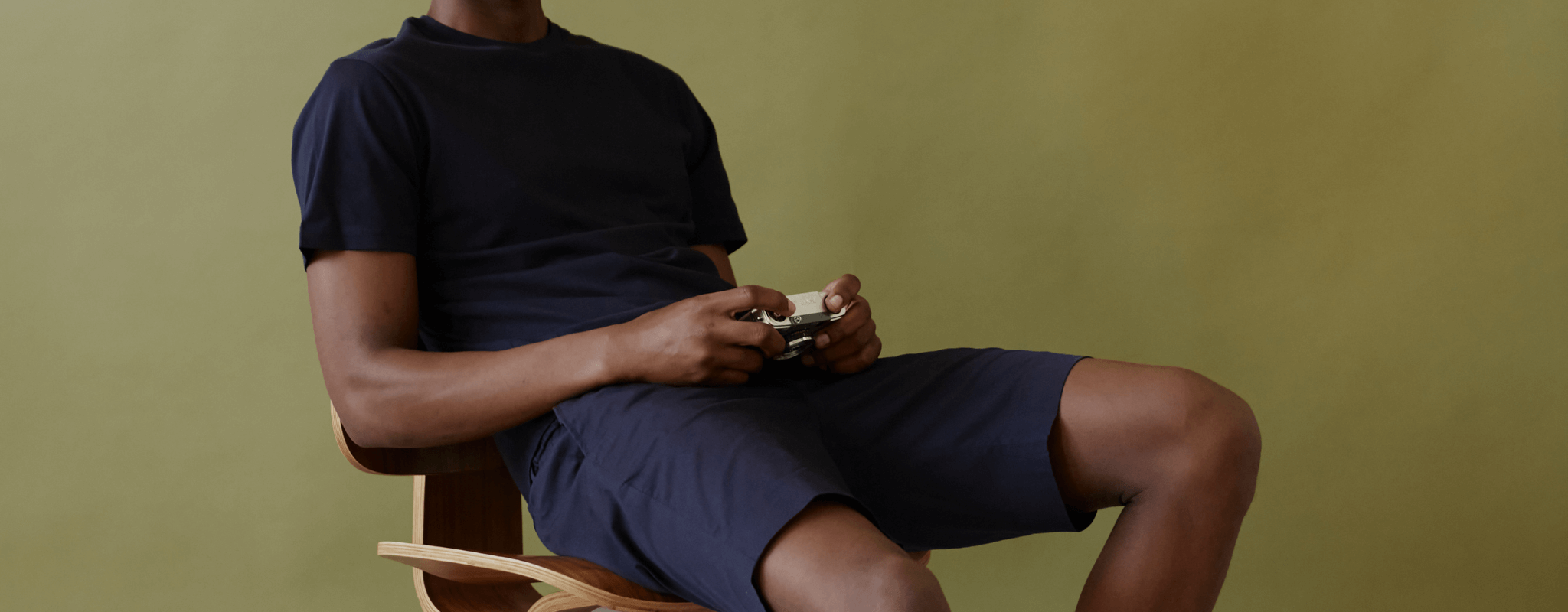Dark colours are the undisputed kings of winter and boardrooms. Black, navy and brown radiate authority and clarity in the office, while creating cool sophistication when the mercury drops. But as soon as summer kicks in, we instinctively gravitate towards lighter shades to bring on that breezy, laid-back vibe. So here’s the big question: are dark colours only meant for winter, or can you still pull them off in the heat without breaking a sweat? At SANVT, we’ll let you in under what conditions dark colours can be a sharp summer move: stylish, functional, and sweat-free.
Have you ever noticed how the color palette of our outfits tends to follow the weather’s lead? On grey days, we’re immediately drawn to darker hues. Come sunshine, we reach for light, bright and the occasional bold summer pop. This isn’t just a style habit, it’s science and psychology at play. Light colours feel cooler, fresher and friendlier. Dark ones on the other hand might feel heavier, warmer, and more serious. But here’s the twist: dark colours don’t have to be a fashion faux pas in summer. They can in fact, when done right, become a standout summer style statement! But why do dark clothes have a bad rap in summer in the first place?
Why We Ditch Dark Colours When the Sun Comes Out
There’s a reason why your granny always told you not to wear black in the sun. And for once, she’s got physics on her side. Dark colours absorb more sunlight, while lighter shades bounce it off. The result? Dark fabrics heat up faster, which can leave you marinating in your own sweat. Not exactly what we want in summer, when already dealing with heatwaves.
Then there’s the psychological factor: we associate light colours with freshness, ease and effortlessness, while dark outfits feel heavier, moodier, and simply more... wintery. But does that mean you should banish dark tones until autumn rolls back around? Not quite.
When Do Dark Colours Work in Summer
1. Fabric Beats Colour, Every Time
Here’s the deal: whether or not something’s summer-ready doesn’t depend on the colour, it’s all about the fabric. Lightweight, breathable natural fibres like linen, lyocell, hemp, or organic cotton can easily balance out the heat effect of dark tones.
A dark brown t-shirt made from premium, breathable cotton worn with ivory chinos? Spot on for high summer. Much more comfortable and functional than a thick, synthetic, light-coloured shirt that clings to you like a second skin. So, trust the fabric, regardless of the colour.
2. Fit for (Summer) Purpose
Another big factor in whether something works in the heat is the fit. Loose, airy cuts allow better airflow. Therefore the combination of a pair of navy shorts with an unbuttoned navy polo isn’t just stylish, it actually helps keep you cool thanks to the extra ventilation.
Tight-fitting clothes in summer on the other hand are never a good idea, whether they’re light or dark. You’ll just end up turning into a walking sauna. So the cut matters. A lot.
3. Summer Nights & Dress Codes
If there’s a perfect moment to pull off dark colours in summer, it’s during those warm evenings and at occasions with a hint of formality and dress codes. Dark shades come into their own at summer soirées, when the sun is lower in the sky and you no longer have to worry about the heat-absorbing effect of direct sunlight.
A combination of a black polo shirt with relaxed black chinos looks modern, sharp and still breathable when the day cools off. Throw on a crisp white summer t-shirt underneath, pair it with white sneakers and top it off with a white Oxford shirt, whether tied around your waist, casually slung over your shoulders, or buttoned up if the evening gets chilly. This look is effortlessly put together, with a hint of nonchalance.
Are Dark Colours Just for Winter? Here’s the Verdict.
Short answer: absolutely not. Dark colours aren’t exclusive to winter or cold days. With the right fabric, the right cut and the right occasion, you can wear dark tones all summer long and look damn good doing it. The result? A confident, smart look that’s never overdressed, never impractical and definitely never boring. Therefore dark colours don’t have an off-season, if you know how to play them right.




